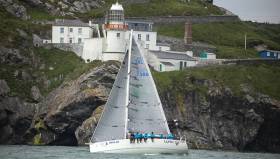Displaying items by tag: sailing courses
The Irish National Sailing School is offering new after schools learn to sail programmes for children of all ages. There are two new programmes available, an after schools club for children of all ages and our all new Wednesday afternoon’s transition year programme to allow children to tackle new challenges during transition year.
The after school club is specifically aimed for primary school children in the South Dublin locality as a facility to cater for supervised homework with the added bonus of a number of land and water activities. These activities include launch trips to feed the seals, some sailing if time allows or some on the water fun in our new water park. The INSS are also able to offer a collection service from local schools.
The Transition Year/Second Level programme is designed to help students make the transition from dinghy sailing to be competent on both racing and cruising yachts. With LYNX its highly successful racing yacht and Beaufort Venture, its dedicated cruising yacht the INSS says it is perfectly suited to both ends of the yachting spectrum. The programme will cover navigation, practical sailing skills on both yachts, use of VHF radio and can also include the National Powerboat Certificate course.
Of particular interest to many children and yacht owners alike will be the opportunity for children to undertake the keelboat and yacht racing module which will teach children all the skills, tricks and knowledge to be competent crews and helms on racing yachts and keelboats, This training will take place on 1720 keelboats and its offshore racing yacht LYNX.
The programme is modular in format allowing students to undertake different sections as they please. The programme in the perfect solution for young students to gain work towards obtaining the Gaisce President’s award. The programme will conclude with a weekend long passage on-board one of its yachts lasting from Friday afternoon until Sunday evening, again this is in keeping with the requirements of the Silver Gaisce Award. The destination of the trip will be up to the students, who will use their new found skills to plan and execute the voyage, all under the guidance of one of its Cruising Instructors.
Further information on the INSS website here
Howth Yacht Club Launches 2011 Sailing Programme
Howth Yacht Club will launch its programme of open sailing events for 2011 at the club house tomorrow evening (Thursday 31 March).
In addition to running club sailing throughout the year, and both junior and adult sailing courses to get more involved in the sport, HYC will also be hosting more than 20 open events this year.
These are set to include local, provincial, national and international championships, which are hopes to attract visitors from all over Ireland and beyond.
For more details visit the Howth Yacht Club website at www.hyc.ie.
























